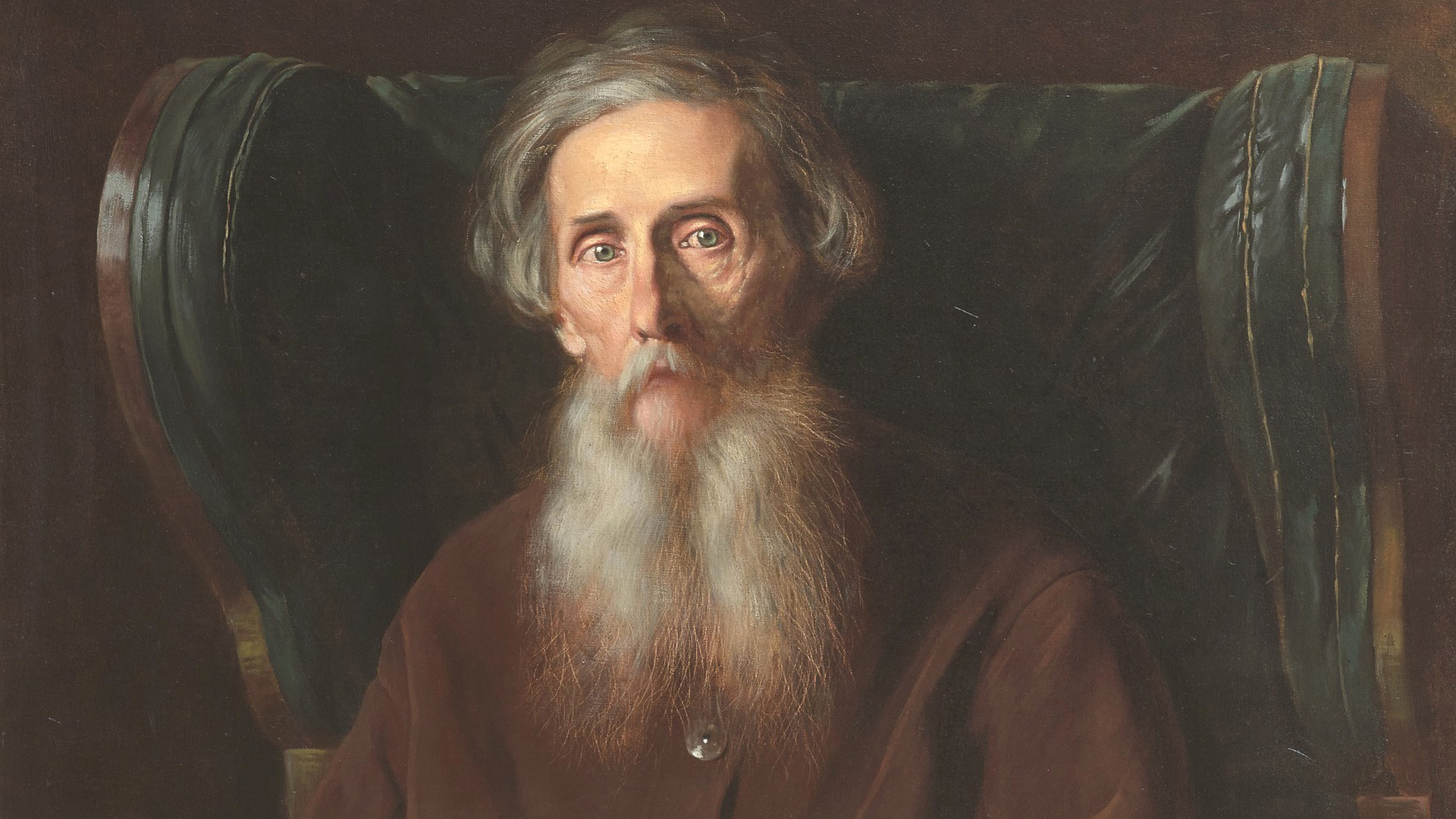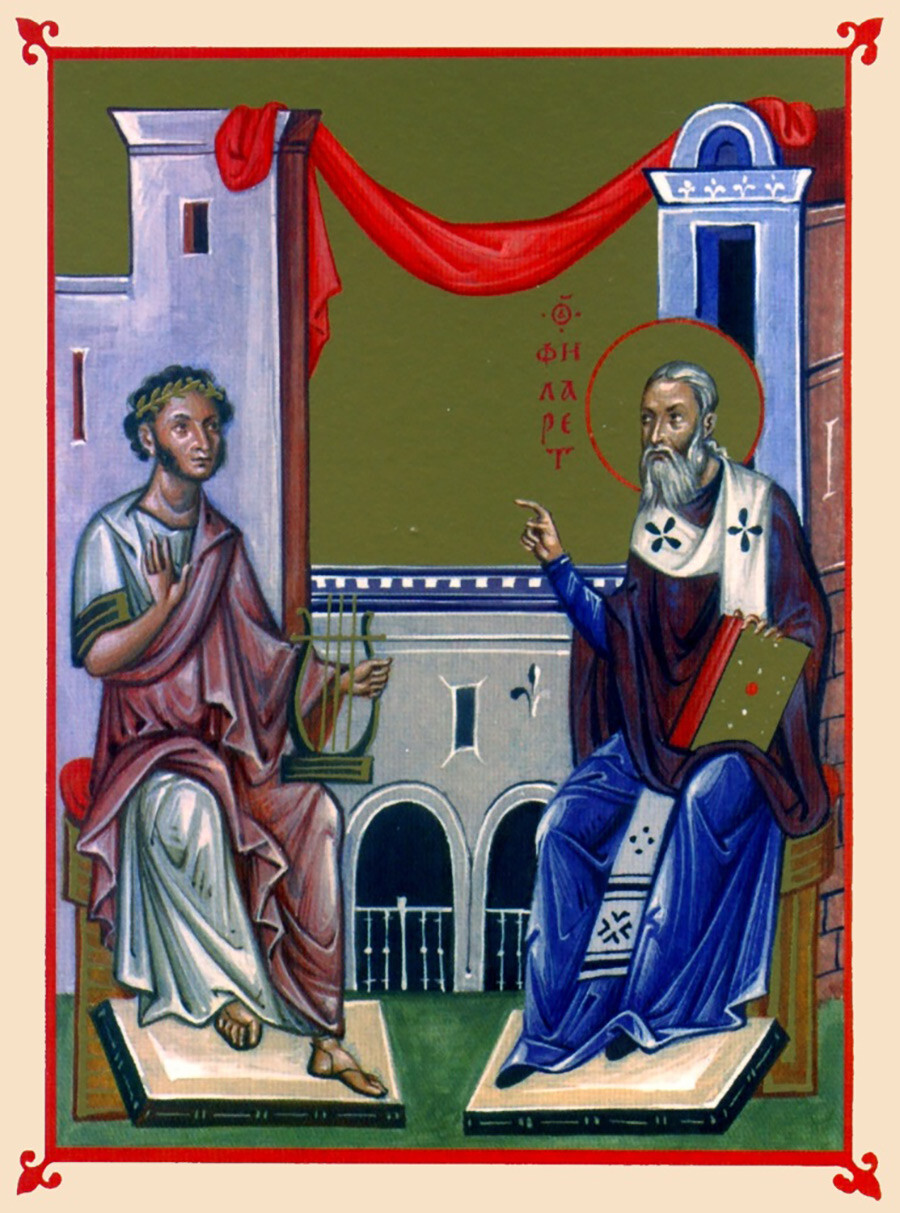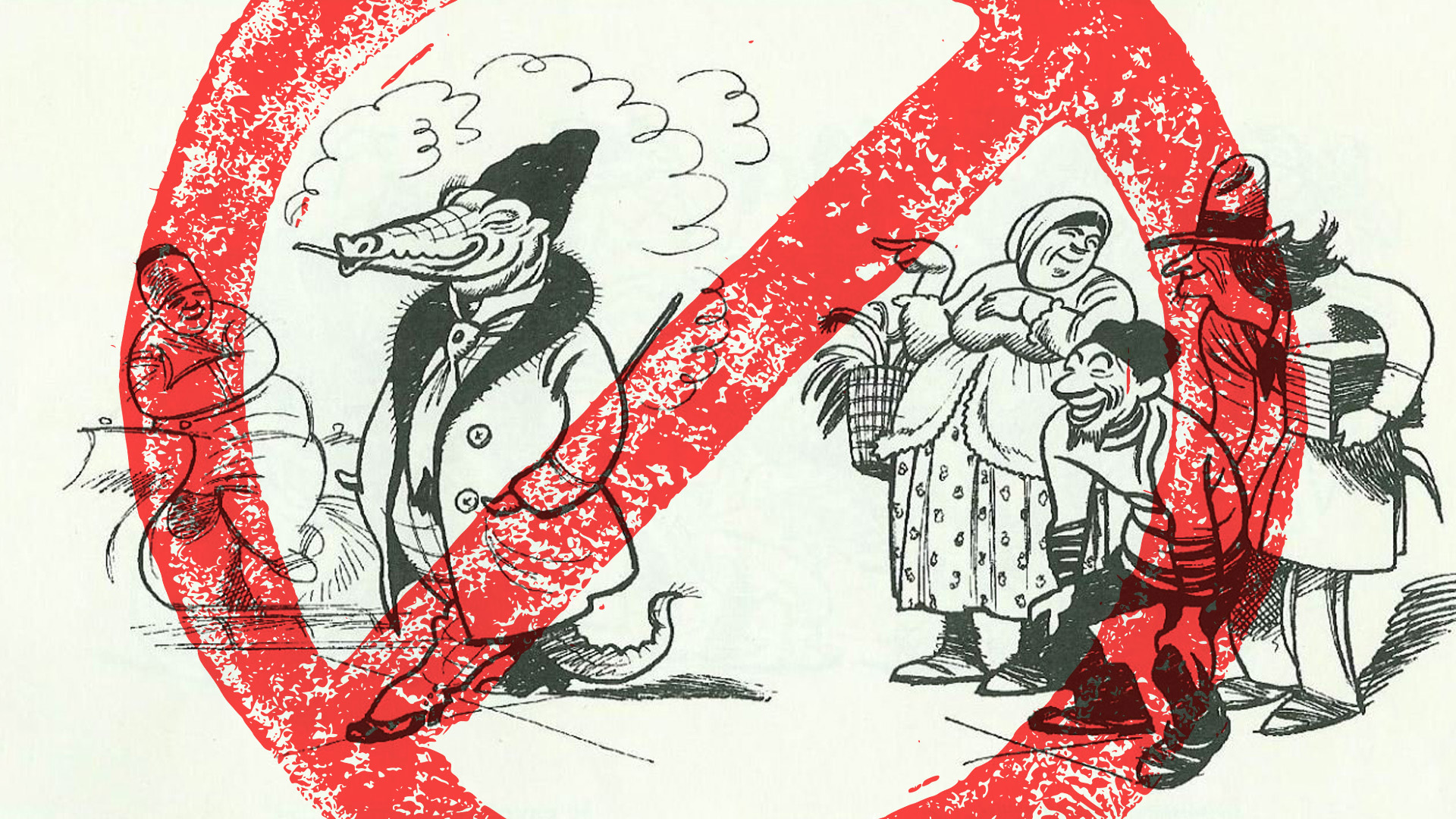
How did Pushkin appear on an icon?

In 1830, the poet published “skeptical”, as he put it, lines in his ‘Northern Flowers’ almanac:
“A gift in vain, a gift by chance,
Life, why were you given to me?
Or why were you condemned to execution by a secret fate?”

The poem was read by Metropolitan Philaret of Moscow and Kolomna and he wrote a response. Thus, a dialogue in verse began between the clergyman and the poet. And, soon, Pushkin’s response appeared in the ‘Literary Gazette’:
“In hours of fun or festive boredom,
I used to entrust the lyre
With the effeminate sounds
Of madness, laziness and passions.”
It ended with the lines:
“By your fire the soul is scorched,
Rejected the darkness of earthly vanities
And the poet listens to the harp of the seraphim
In the sacred horror of the poet.”

What is interesting is that, in the original version, Philaret was mentioned instead of Seraphim, but, later, the poet replaced his name with a more neutral image.
The story of the correspondence between the two great men was reflected in the icons of the saint. For example, on one of them, Pushkin is depicted with a laurel crown and a lyre in his hands, the Metropolitan – with the Bible. And for the Moscow church of the Icon of the Mother of God ‘Joy of All Who Sorrow’, the artists depicted the meeting between St. Filaret and Pushkin in one of the icon's scenes.












